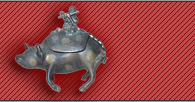BASIC ELEMENTS OF MY MUSICAL LANGUAGE
II. Interpoint
(punctus inter punctum)
Interpoint can be vertical (which is self explanatory):

Example: Symphony No. 1, third movement
can be horizontal:

Example: Symphony No. 1, first movement
N. B. The accented string rhythms
coincide with the strong beats of the measure. Woodwinds establish
their rhythm on the second 8th-note (horizontal displacement
by the value of 1/8). Horns start on the third 8th-note (horizontal
displacement by the value of 1/4).
can be metrical:

Example: Expressions, Op. 81, No. 10 (Exit)
N. B. Although the patterns coincide
vertically, they are of different meters and different lengths.
can consist of various combinations
of the three essential trends:

Example: Showcase, Op. 75
Combination of metrical and vertical interpoint
More complex combinations:
6-part "Formula" (3rd
movement of Symphony No. 1, Op. 42)

8-part vertical/horizontal interpoint
(Quintet Op. 44, 2nd movement)

|





